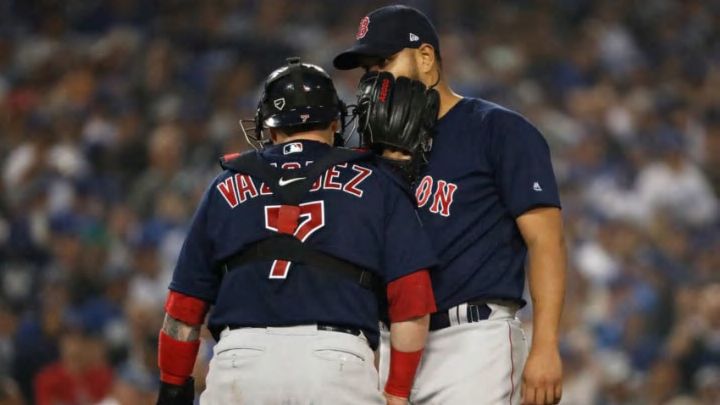
Having lost the lead with Jansen, Roberts pulled his closer to start the ninth and turned to Floro. Pulling a closer in a non-save situation is something managers routinely do during the regular season, but not necessarily in the World Series. Roberts was probably bowing to the reality that if he used Jansen a second inning for a second straight game, he would be unable to bring him back Sunday night, possibly in an elimination situation.
But trusting the game to Floro enhanced the prospect of just that elimination scenario occurring. Sure enough, Floro loaded the bases with two out, then gave way to Wood, who surrendered hits to Benintendi, Pearce and Bogaerts, producing five runs.
Wood’s use late in the inning raises another question: Why, after Holt doubled, didn’t Roberts bring the left-hander in to face the left-handed hitting Rafael Devers? Instead he stayed with Floro, who gave up the hit that sent home the go-ahead run. The answer appears to be that Roberts had been caught flat-footed; he didn’t get Wood up in time to be ready to come in at that moment. There are few state secrets in baseball, and the advantage of using a left-hander against a left-handed hitter in a key late-inning situation certainly isn’t one of those few.
It is also an entirely fair question whether, had Roberts stayed with Hill longer in the seventh, he might have been able to bypass Madson altogether, retain a margin that could have allowed the Dodgers to navigate the eighth without Jansen, and save their closer for an actual closing situation in the ninth.
In retrospect, and as satisfied as the Dodgers might have been with Hill’s work to that point, his removal early in the seventh looks very much like the initiation of a chain reaction bullpen disaster for a team ill-positioned to afford such.
